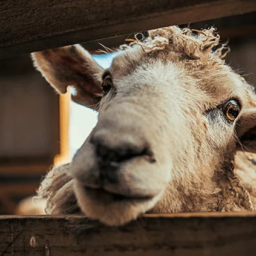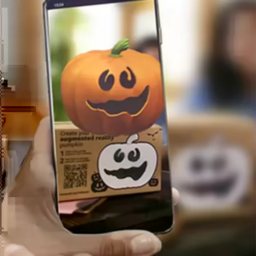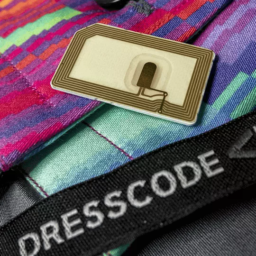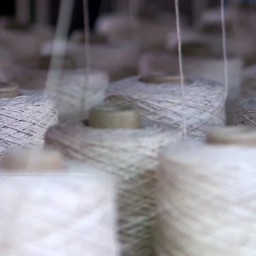Cary Sherburne, Senior Editor of WhatTheyThink, tuned in to an interesting WTIN webinar, Smart Textiles for Fashion, Entertainment, and Lifestyle. She summarizes some of the key points here, but recommends that industry professionals interested in smart textiles review the entire free webinar.

I have been following the very interesting developments in technical textiles since we launched our textiles section almost two years ago, so when I saw a promotion for the WTIN webinar on Smart Textiles for Fashion, Entertainment, and Lifestyle, I was interested to see what new information they had to share on the topic. The webinar did not disappoint! While many of their webinars are password-protected, this one—likely since it is promoting a new report series on the topic—is available for free.
Presenter Fiona Haran, WTIN Editor for Technical Textiles, started the session by defining what is meant by smart textiles for Fashion, Entertainment, and Lifestyle—or in WTIN shorthand, FEL—saying, “Fashion refers to everyday fashion, or haute couturegarments and accessories; entertainment refers to wearables for gaming, augmented reality, and virtual reality experiences; and lifestyle is a textile-based item aimed at physically active people or those that have a specific life interest such as yogis.”
Haran points out that media interest in smart textiles has largely been driven by their use for things like eye-catching stage costumes or haptic gaming suits, which typically are not designed for comfort and flexibility, and they can be difficult to wash and not very durable. This presents a challenge for wider adoption of these technologies among fashion brands and consumers. However, there is a great deal of activity in this area with efforts to overcome those challenges, and we will be following up with some of the interesting companies Haran identified during the session.
One that particularly stood out to me was London-based CuteCircuit, a pioneer in the field of fashion wearable technology. The company describes its mission as: “Merging futuristic fashion design with advanced technologies and smart fabrics to create beautiful fashion with magical interactive capabilities. Founded in 2004, over the last 15 years CuteCircuit has created a new fashion paradigm through technological innovation.”

As our readers will remember, we have been very interested in how the so-called miracle material graphene can and will be used in textiles and fashion. Among other innovations, CuteCircuit designed the world’s first little black dress (LBD) that incorporates graphene. It was commissioned by Into Trafford Centre and developed in collaboration with the scientists at the National Graphene Institute at the University of Manchester in the UK, where graphene was initially discovered. According to CuteCircuit, “The design of the dress reflects the properties of graphene also in its shape and decoration. An electron microscope view of Graphene shows hexagonal crystal-like formations, this inspired 3D printed crystal-like translucent appliqués combined with lightweight laser-cut colour changing elements that innovate haute-couture techniques.” Based on the depth of breaths the wearer takes, built-in LEDs change color with the appearance that the LEDs are floating on the model’s body. While this is an LBD that most of us probably won’t have access to soon—or be able to afford—it is an interesting demonstration of technical textiles at work in the world of fashion.


Haran defines active smart textiles, such as the LBD pictured above, as fabrics that can sense stimuli from the environment and react to them, such as changing lighting colors on the dress based on depth of breaths. She also cites another generation of smart textiles, very smart textiles, that go a step further by adapting themselves to changing circumstances through data processing and forecasting. An example of the latter might be a jacket that contains a sensor that can measure temperature and could be equipped with a heating module that could provided extra heat when temperature drops below a certain level.
In the entertainment category, one example is haptic gloves for gaming that creates an immersive AR or VR experience in gaming through finger and palm haptics. This article provides more information about how these technologies are making their way into gaming, and the potential they have for other uses.
A lifestyle example (and also entertainment!) comes from TILT Innovations, a technology company launched by the Welspun group. Among other things, the company has developed what it is calling Spin Tales, the interactive bedding for kids that allows kids to scan the duvet using a tablet or smartphone to bring the characters to life.

There are also some weirder implementations, such as the robotic spider dress from Anouk Wipprecht using Intel’s Edison chip and a proximity sensor, in case you want clothing that will help you defend your personal space. Check out this video! Think you will have one of these in your closet soon?
This provides a brief overview of some of the interesting smart textiles innovations we are starting to see in fashion, entertainment, and lifestyle. Washability and scalability are challenges this market faces, and some experts also worry that smart textiles could isolate us even further from human contact than smartphones have…so developers are encouraged to keep that in mind, designing and marketing smart textiles that enhance rather than replace human interaction.
Haran notes that smart textiles are still a novelty, but as consumers become more aware and interested in the possibilities, the textiles industry will be challenged to improve durability, safety and comfort/fit for wearables. There should also be consideration given to how we dispose of these smart textiles at their end of life, ensuring at least some level of sustainability. Data security can also be a concern.
We will continue to follow the developments in this very interesting segment of the textiles and fashion market. Stay tuned!
Join the Color Collective
Registration is FREE and only takes a moment
- Latest industry advice
- News, Article, Technology
- Events & Awards,
- And lots more...
Related Posts

It is estimated that more than 25% of all work activities will be displaced by automation by 2030. But what does this mean for textile designers?

October 2020 employment figures are at least moving in the right direction from September, albeit slowly; overall printing employment in October was up +0.8% from September, with the gains predominantly in production staff continuing to come back. Let’s not look at year-over-year changes in graphic arts employment

Everyone has access to design tools; that doesn’t make everyone a smart designer. Creatives need to learn today’s technology to make themselves more valuable.

Pressure on the environmental impact continues for textile and apparel companies. Sheep, Inc. is taking a creative approach towards carbon-neutral operations.

As businesses reopen, they will require COVID safety signs and distancing dots. Richard Romano identifies some unique samples restaurants are likely to need.

Richard Romano spoke with Dexter Johnson, author 5G in Signage Technology about the technology and the advantages of 5G and its potential applications in sign and display.

There samples of printing all around us. Taking a summer stroll down the main street I highlight examples of printed material that many may not be aware of.

On-demand manufacturers are seeing increased demand, due to the pandemic along with a shift in the industry to manufacture more efficiency with sustainability.

Moving from analog to digital production brings some challenges to printers as the corrugated packaging market continues to expand.

What’s the current state of digitally printed packaging? NAPCO gives us key insights with their latest research ‘Digital packaging: The Time is Now!’

One of 100 Summit celebrates packing design. This year’s winner focused on sustainability, personalization and innovation.

UK-based Dresscode has taken a unique approach to wearable technology with their CashCuff is the world’s first smart payment shirt.

Textile Manufacturing automation is accelerating but the remaining “last mile” sewing, continues to be a barrier to re-shoring. There are some of efforts underway to automate sewing and can change the North American apparel manufacturing

It may seem impossible to turn a multi-trillion-dollar textiles and apparel industry into a sustainable model, this past year did see some significant shifts. Here’s what it may mean for the future.
